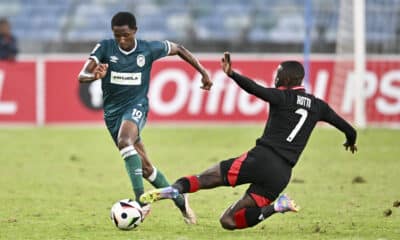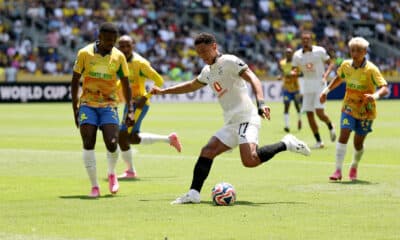Just after midnight local time, Banyana Banyana lifted their first ever African title, holding off a late charge from Morocco on their home turf to win 2-1. Throughout the tournament, Banyana have been seen as one of the favourites, slightly behind Nigeria. True to form, the two were on a collision course for the final. But the hosts dumped the 9-woman Super Falcons out via a penalty shootout in the semis. Nigeria didn’t recover from that, even falling to 4th place after the 3rd place playoff, their joint-lowest finish at WAFCON.
Group Stages
Once the fixtures were confirmed, Banyana’s toughest games were always going to be Nigeria in the groups and whoever they met in the final (if they got there). Oddly, the two games followed a similar scoreline (2-1) & a scoring pattern – 1-0, 2-0 and then 2-1. In the opening game, both Banyana and Nigeria started the first half slowly. But there was a five-minute flurry where they scored two goals and took the game away from Nigeria. Only later would Nigeria start causing trouble and they managed to score in the final minutes. Something similar would happen in the final 3 weeks later, but we’ll get to that.
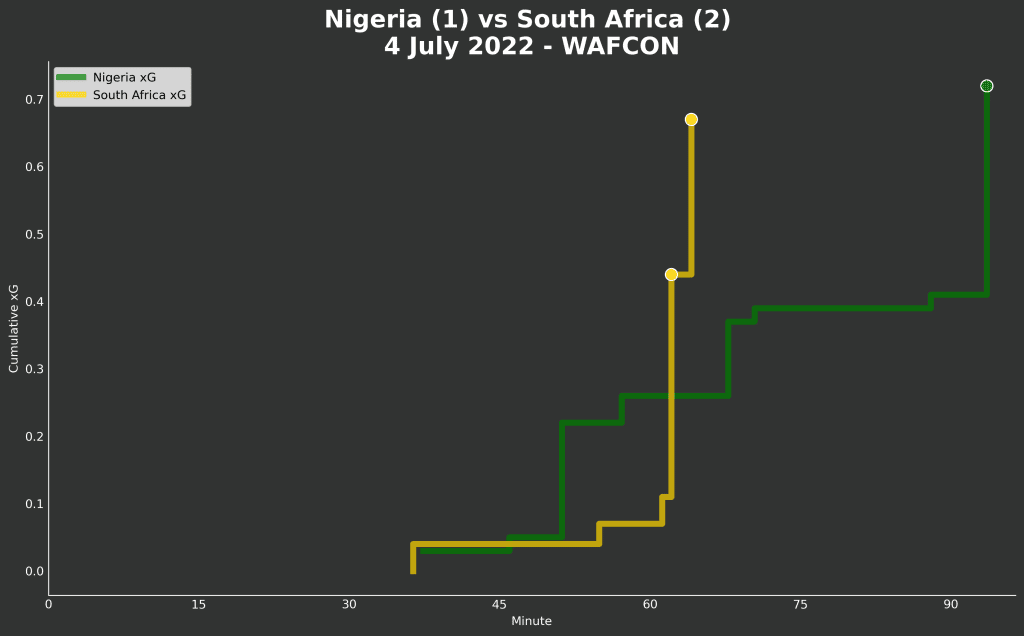
Having faced the highest ranked African nation in Game 1, it was hard to gauge what Banyana were capable of from just 90 minutes. Plus, the two teams were more or less matched on xG – 0.67 & 0,72. A controlled and disciplined display was needed (and delivered) against the Super Eagles, but things were different in Game 2, against Burundi. At kickoff, Banyana (World Ranking 58) v Burundi (169) was the biggest ever world ranking gap between two sides at a WAFCON finals. The gap showed on the pitch as well, as Banyana breezed through.
30 – shots for Banyana v Burundi (highest in a match at the tournament)
7 – xG for Banyana v Burundi (highest in a match at the tournament)
5.5 – non-penalty xG for Banyana v Burundi (no other team produced more than 3.4xG in one game)
The only surprise here was that the full-time score was just 3-1. Yet, this is the match where the whispers started. While Banyana were creating enough, they were not being clinical. Another 23 shots (and one goal) in the 3rd game against Botswana lent further credence to that idea, and the whispers became murmurs. The display was not as dominant, with the 23 shots yielding a paltry 1.57xG. When Thembi Kgatlana was withdrawn after an injury, the murmurs had become serious worries.
Meanwhile, the defence went quietly about their business, not giving away too much. After a shaky start (conceding once each against Nigeria & Burundi), they limited Botswana to what would turn out to be the lowest xG total from a team in a match at the tournament. With an attack now short of a superstar, a watertight defence was needed.
3 – shots for Burundi v Banyana (the second joint-lowest by a team in a match at the tournament)
2 – shots by Botswana v Banyana (joint-lowest in a match at the tournament)
0.05xG – xG for Botswana v Banyana (the lowest in a match at the tournament)
The xG numbers for the group stages show that quality-wise, Banyana were creating the best chances. But the 2.93 differential between goals and xG was a worry.
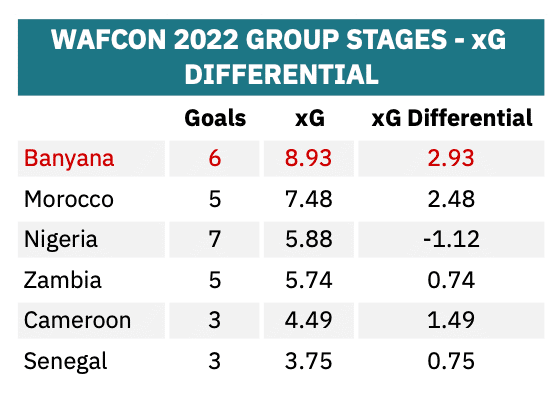
While the volume of shots was impressive against Botswana, the quality had already started to drop (now at 0.07xG per shot). It wasn’t just a question of being clinical, but a question of whether the team were making the best choices when taking aim.
Knockout Stages
We expected that the number of shots would dry up in the knockout stages as the opposition became tougher. And it proved to be so.
10 – shots by Banyana v Tunisia (QF)
9 – shots by Banyana v Zambia (SF)
10 – shots by Banyana v Morocco (Final)
Yet, in terms of quality Banyana continued to create the same in each knockout match.
1.26 – xG v Tunisia (QF)
1.25 – xG v Zambia (QF)
1.25 – xG v Morocco (QF)
When your xG attack is low, it becomes crucial that you’re conceding next to nothing in defence. The Burundi game (7xG) was an anomaly – this was never going to be a high xG team. In particular, the knockout stages need disciplined performances more than swashbuckling performances. Think of the 2010 Spain side that won the World Cup in South Africa.
Instead, the defence kept the opposition attacks at bay throughout the competition, and were the vital cog in winning games (5 of them by a 1-goal margin), and ultimately the tournament for Banyana. Ask the Player of the Tournament, Ghizlane Chebbak, and she will also confirm. Even when a team like Zambia managed 14 shots, they were all pretty harmless, with most of them taken in low-value positions. It’s the only match where a team took more than 10 shots against Banyana.
0.81 – xGA v Tunisia (QF)
0.68 – xGA v Zambia (QF)
0.52 – xGA v Tunisia (QF)
The final also saw a slightly similar pattern from the opening game, an 8-minute brace from Hilda Mogaia with Morocco only coming to the party late on. At half-time, it seemed as though Banyana were struggling, but all in all, they rained 8 shots at Morocco’s goal, before succeeding with their 9th and 10th shots. Thereafter, as they had done on Matchday 1, Banyana were focused on securing the game.
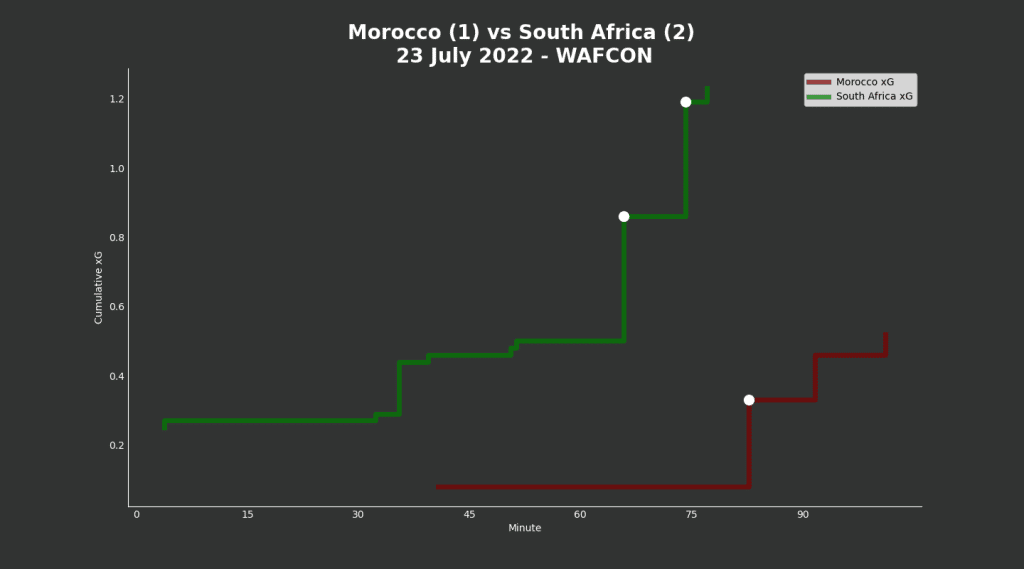
1 – shots from Morocco in the first 80 minutes (11 for Banyana)
3 – shots for Morocco after 80 minutes (compared to 0 for Banyana)
Unpredictable Attack
One obvious observation from the final was the way Morocco attacked from the left via Fatima Tagnouli (Jersey Number 11). The Lioness with silver hair saw a lot of the possession and caused many problems for Banyana throughout the match. It’s something we highlighted before the final, that the majority of Morocco’s attacks would come down the left. In their five games leading up to the final, the left side was trusted most.
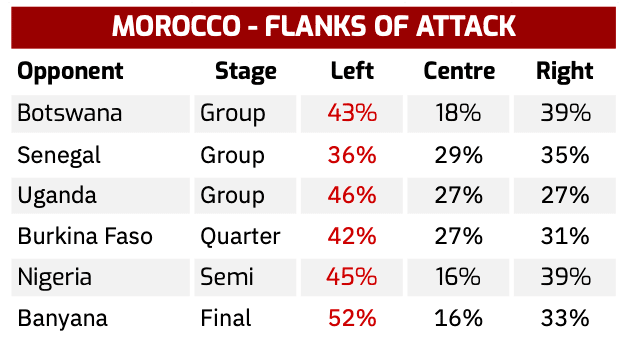
This had worked for them so far, so in the final, they went even further. 52% of Morocco’s attacks came down the left, the second highest proportion for left-field attacks by a team in a match at the tournament. Predictably, their goal came down the left channel.
This brings us to another arrow in Desiree Ellis’ quiver – Banyana were never reliant on one particular channel of attack. So, when Thembi Kgatlana got injured, a lot of fears were unfounded.
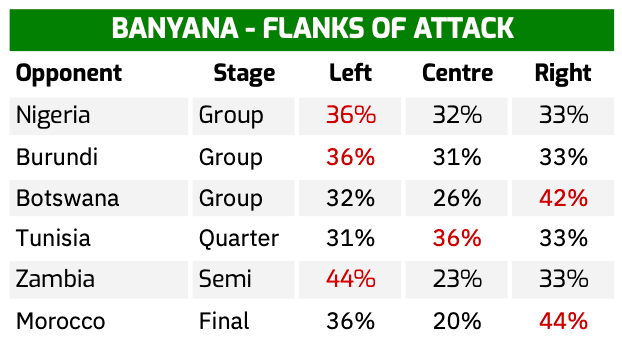
She is one of the best on the continent and led the team for shots before her injury, but her absence may have been a blessing in disguise. Without a superstar, the rest of the team could share the responsibility of moving the team forward. The game when she got injured coincides with the time that Banyana varied their attacks more. Only Desiree Ellis can tell us if this was by design. In hindsight, had we lost a Matlou or Mbane, it’s easy to see that there could have been serious issues.
A defence that did not give away too much and an unpredictable attack were the key factors that provided a crucial extra edge to Ellis’ team. Of the six wins, five of them were by a 1-goal margin (a new record). For reference, think Spain 2010 – Xavi, Iniesta & Villa were brilliant players, but Puyol, Ramos & Casillas were crucial in a low-scoring tournament for the winners. For the former, read Jane, Kgatlane and Seoposenwe. For the latter, read Noko Matlou, Bambanani Mbane, marshalled by Andile Dlamini.

















